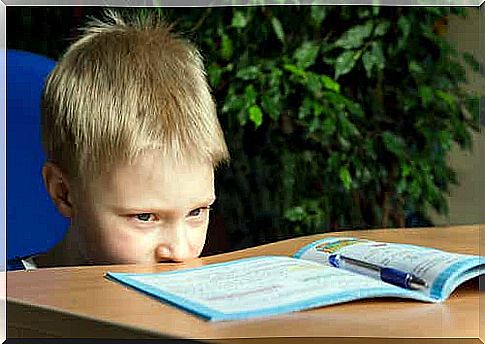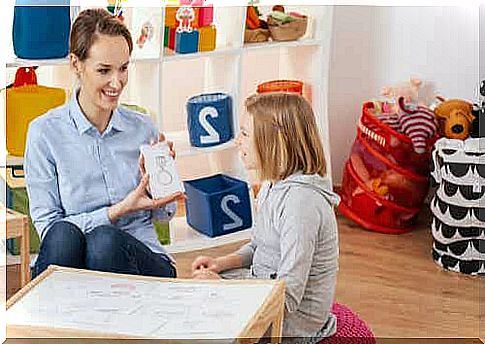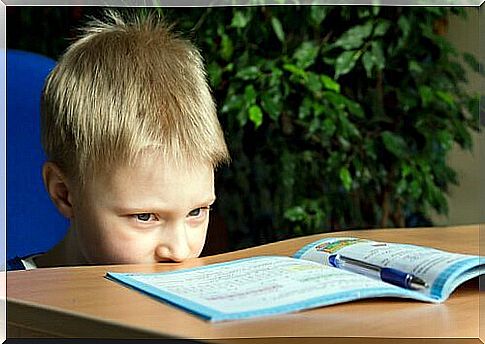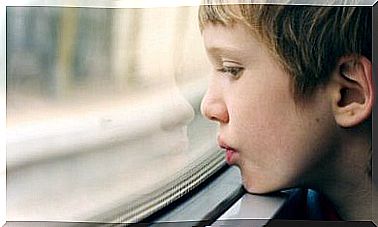The Psychological Treatment Of ADHD

ADHD is a disorder that begins in childhood and includes a persistent pattern of inattentive behavior, hyperactivity and impulsivity. These behaviors significantly interfere with performance and daily activities. It is therefore important to know what the psychological treatment consists of.
ADHD is a public health problem due to its high prevalence, between 3 and 7% of the school population. Children with this disorder therefore have a greater risk of failure at school. They present behavioral problems and difficulties in their socio-family relationships.
The isolated presentation of the disorder is infrequent. Over 85% of patients have at least one comorbidity and approximately 60% have at least two comorbidities. The most common are oppositional defiant disorder, anxiety disorder and conduct disorder.
Aspects to consider when starting ADHD treatment
ADHD treatment should be multimodal and individualized, taking into account the patient and their family. The goal is to decrease symptoms, complications and negative impact. Multimodal and / or combined treatment of ADHD involves three approaches: pharmacological treatment, cognitive and behavioral treatment, and psycho-educational treatment.
The general philosophy of cognitive and behavioral processing applied to children is to reward positive points rather than punish. We thus work on techniques of self-control, social skills and problem-solving.

The goals of ADHD treatment
With young children with ADHD, treatment usually focuses on training the parents. This concerns children up to the age of 6.
In contrast, in older children, parental training with cognitive and behavioral techniques is combined with social skills training and self-instruction. Thus, the goals of individual cognitive and behavioral processing are:
- Self-regulation.
- Control of irritability.
- Improved communication.
Psychological Treatment of ADHD: Training for Parents
The psycho-educational module of parent training includes giving information about ADHD, motivating, creating a positive disposition towards the child. As well as giving strategies for solving problems as well as improving the atmosphere within the family.
Training for parents can be done both individually and in groups. Nevertheless, according to various studies, the treatment in group format is more effective than the individual format. They are taught the following techniques:
Reinforcement and punishment
- Research and reinforce positive behaviors and attitudes of the child.
- Extinction of negative behavior.
- Once positive reinforcement and quenching are used accurately, differential reinforcement can be used at low rates.
- Supportive materials such as “find, focus, and note” can be used to help parents pay attention to their children’s positive behaviors.
Token saving
The token economy works best if you follow a number of rules. They are the following:
- The “rules of the game” are clearly explained (for example: the points to be won according to each behavior, the specific value of the gain, etc.).
- The token saving is combined with the use of reinforcement, extinction, and response cost.
- Children with ADHD need to know what to do at all times and to know the practical standards.
Over-correction
- By repair-restitution: we use it by asking our child or our student to repair the damage he has caused. It is about correcting the negative effects of bad behavior, returning to the basic situation or even improving it.
- By repetition or positive practice: in this case, the child must repeat an alternative and positive behavior that he has carried out.
ADHD Psychological Treatment: Teacher Training
Teachers need specific support in dealing with children with ADHD. The basic scheme of orientation programs for teachers is very similar to that of parents. The objectives here focus on: school standards, school work and social competence. The phases of teacher training are as follows:
Educate teachers with knowledge of ADHD
- Knowing what ADHD is helps to change attribution bias in a child’s behavior (eg, “child who has a problem” instead of “he behaves this way to annoy me”).
- Know the special needs of students with ADHD.
Teach behavior modification techniques
- Techniques to increase adequate behavior: reinforcement + premack principle, contingency contracts and token savings.
- Techniques to reduce inappropriate behavior : extinction, cost of response and isolation (a moment outside).
Train teachers in strategies for organization and self-direction of behavior
- The teacher teaches the student to develop self-control in a sequenced fashion to solve personal and interpersonal problems.
Facilitate educational adaptations
- Use instructional processes, organizational adaptations and manipulations of the classroom environment to facilitate learning and increase academic performance.
Use enhanced self-assessment
- The goal is for the student with ADHD to be aware of their own behavior. There are three phases:
- Discussion with all the students about the standards of the class.
- Self-assessment skills training.
- Token saving.
- It is applied first to the whole class and then to the student with ADHD.
Offer advice and follow-up of the program
During the last two weeks, the teachers monitor the implementation of the program. To conclude, we can say that there are clinically significant positive effects on impulsivity, hyperactivity and attention deficit.

Psychological treatment of ADHD: techniques for the child
Cognitive psychotherapy comprises a series of psychological techniques that are used to modify specific thoughts, beliefs or attitudes presented by a patient. They aim to restructure the thoughts of children and to arrive at new patterns of behavior.
This type of psychotherapy requires learning and should be applied by trained and experienced therapists. Often, along with the symptomatology of inattention, impulsivity and / or hyperactivity, one can see difficulties in socialization and behavior.
In these cases, training in social skills, problem-solving skills and personal help strategies are very helpful. Now let’s take a look at some interventions such as self-regulation, improved communication, neurofeedback technique, and say-do correspondence.
Self-regulation
Neuroimaging techniques show that children with attention deficit hyperactivity disorder (ADHD) or without hyperactivity disorder (ADHD) have delayed maturation of certain areas of the brain. These areas are related to attention and control of self.
To improve self-control, the most used techniques are cognitive techniques. We are particularly interested in those who take internal language as a regulator of behavior:
- With self-observation, the goal is for the child to become aware of his behavior.
- With self-reinforcement, we seek to ensure that the child obtains a reward for the adapted behaviors.
- Self-instruction training (Meichembaum and Goodman, 1971) aims to make the child learn to talk to himself, so that he has less trouble thinking and being aware of what he is doing or wants to think. .
Ultimately, through these cognitive techniques, we want the child to be able to link behavior and subsequent consequences. In this way, he will be able to evaluate his behavior in relation to the norms of the house, the classroom or the street.
Improved communication
Communication programs for children with ADHD try to increase self-awareness, analysis of relationship with others, and effective solutions to interpersonal problems. Some techniques used are:
- Problem-solving techniques, recommended to calm the child and help him control his hyperactive and impulsive behaviors. In younger children, a variation called the “turtle technique” is used.
- Contingency contracts, mainly used with adolescents in order to obtain compromises that satisfy the different parts of the relationship (for example: student-teachers, child-parents, etc.).
- Social skills training. Group work with adolescents is an effective method of stimulating good self-esteem and reinforcing the individual goals that each one pursues with his family, teachers and therapist.

Neurofeedback
It is a training program through the individual control of brain waves, using electroencephalographic technology. The goal of neurofeedback is to train the patient to decrease their slow waves (theta) and / or increase their fast waves (beta).
With this process, one aims to change an “abnormal” state to replace it with one similar to that of children with normal behavior. In other words, the goal is to get children to gain operative control of their EEG to remedy ADHD-related symptoms.
Say-do correspondence
Say-do correspondence training was designed as an alternative to self-instruction training. It consists of reinforcing those occasions when the child says he has done something and when he has actually done it (“do-say” relationships).
It is also a question of reinforcing what he says he will do in the near future (“say-do” relations) and, above all, of reinforcing what the child has promised he would do and that he has done (“say-do” relations). make-say ”).










